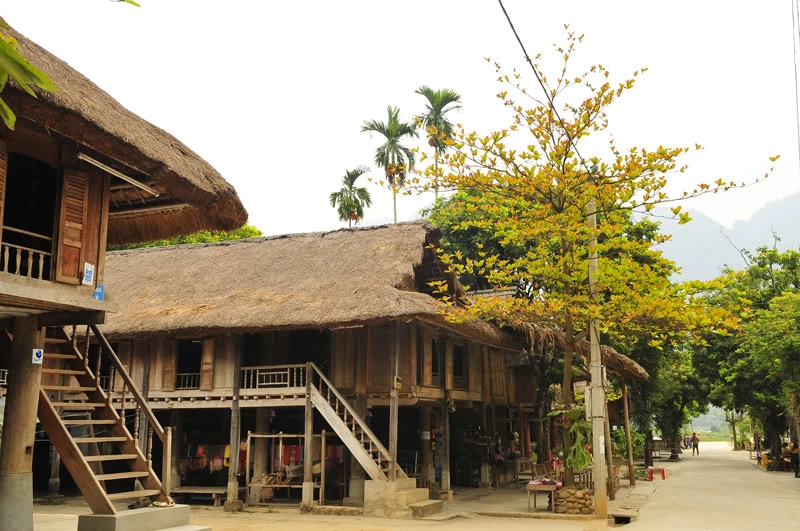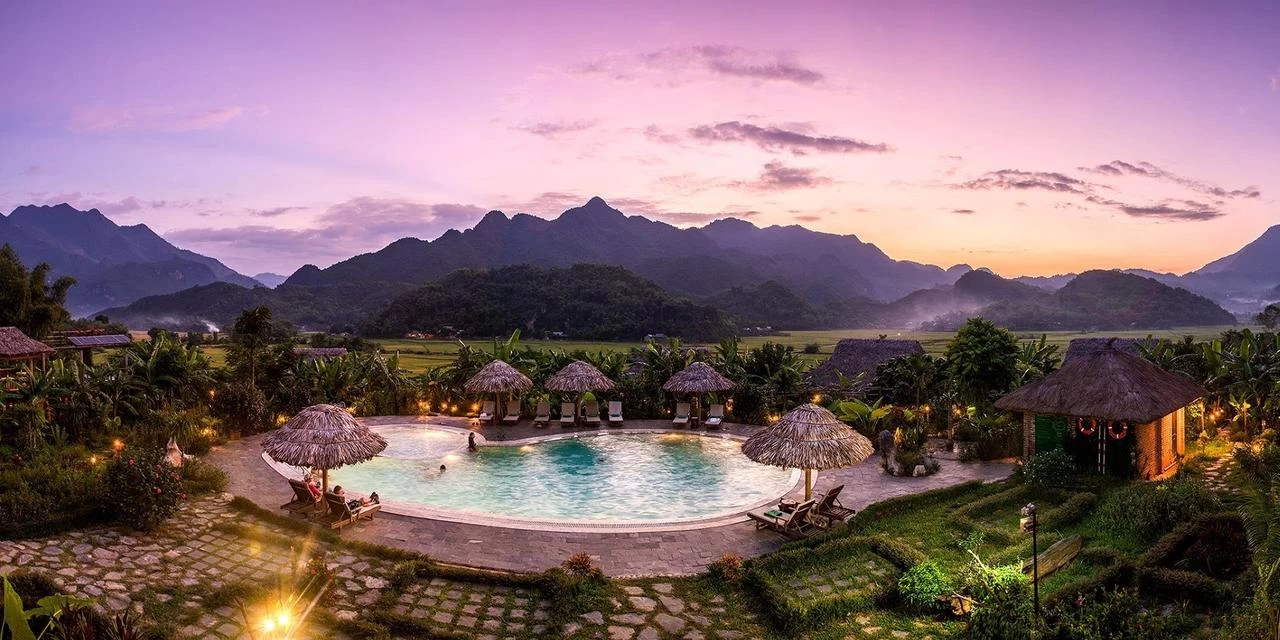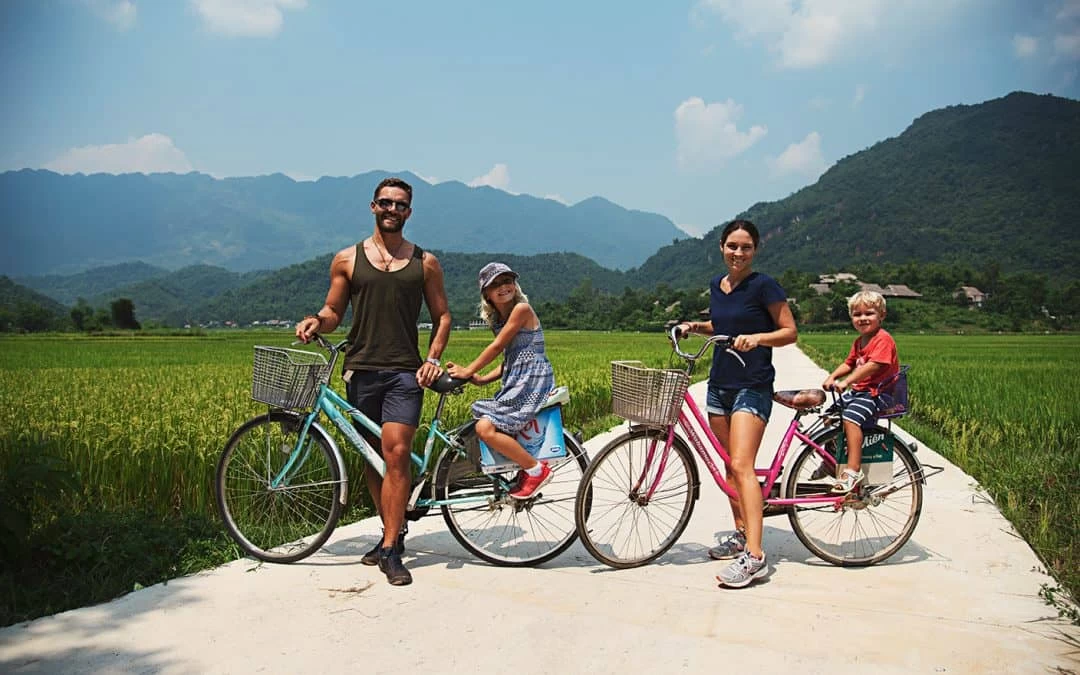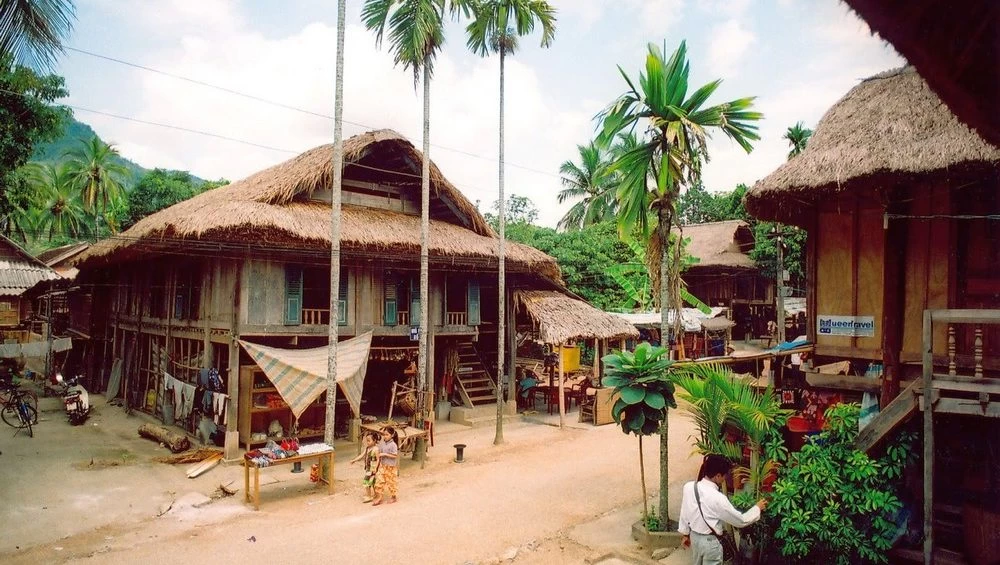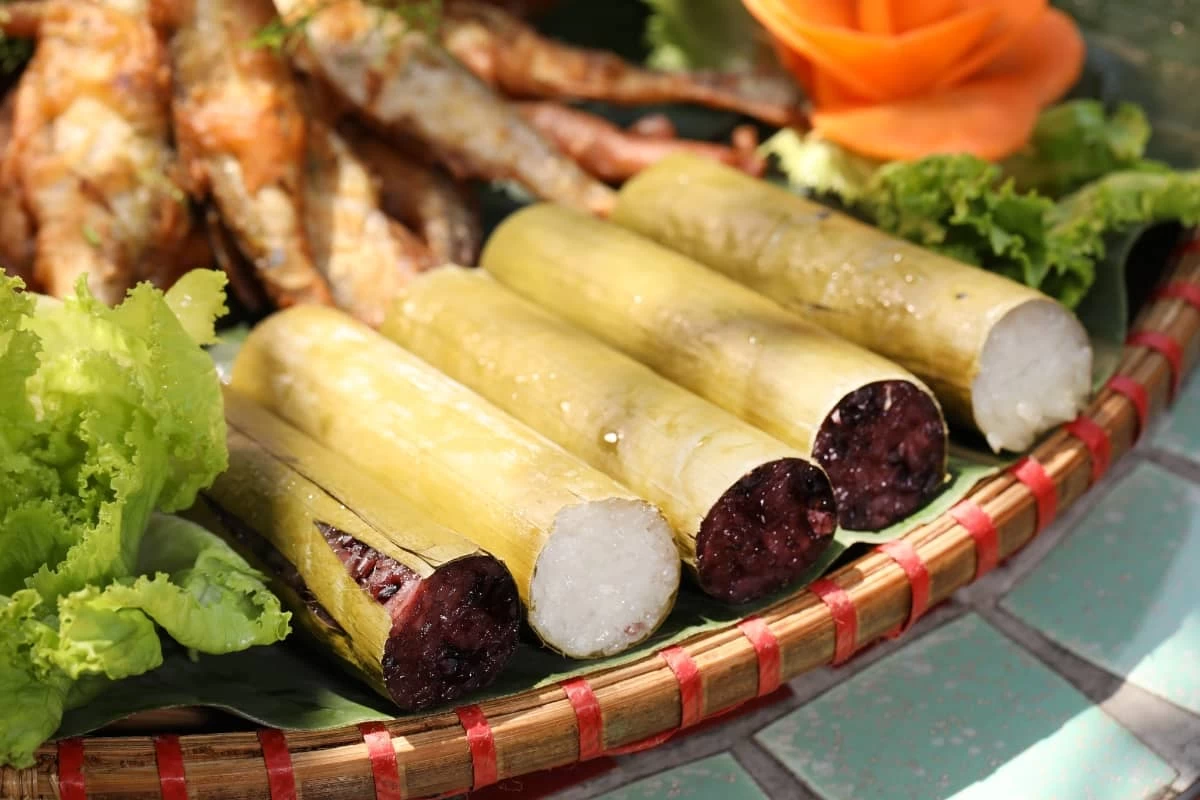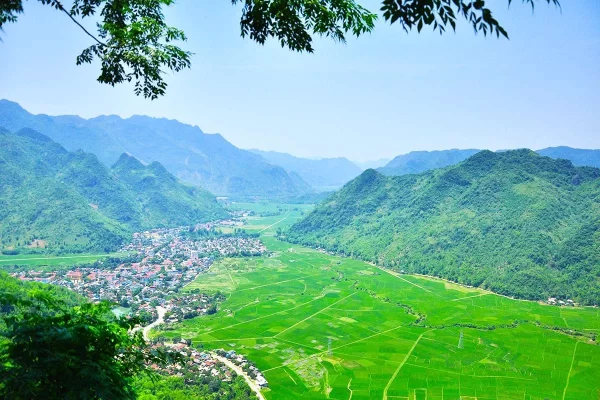
Let’s explore the beautiful Mai Chau valley!
Escape to Mai Chau Valley, a tranquil destination nestled in Vietnam’s mountains. Immerse yourself in the region’s rich culture, explore traditional Thai villages, hike scenic trails, and enjoy local cuisine. Ideal for travelers looking for a peaceful, cultural retreat. Join Ula Travel today on a journey to Mai Chau Valley!
I. Introduction to Mai Chau Valley
1. Where is Mai Chau Valley?
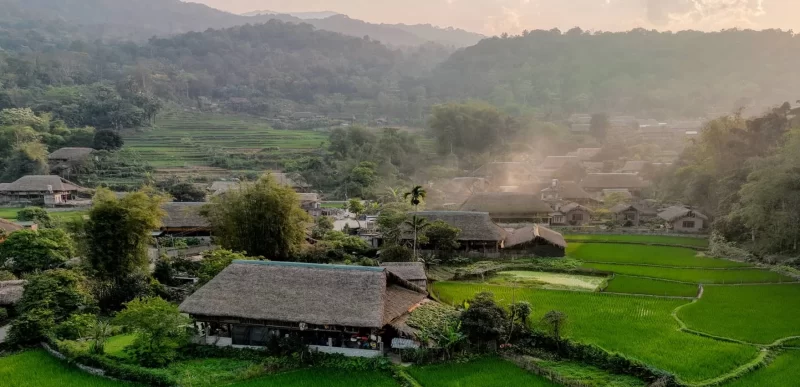
Tourists can easily visit Mai Chau because it is close to Hanoi.
Mai Chau Valley, located about 135 kilometers southwest of Hanoi in the mountainous area of Hoa Binh Province, provides a tranquil haven from the busy metropolis. This picturesque valley is surrounded by lush green hills and terraced rice fields, creating a peaceful haven for nature lovers and cultural explorers alike. Known for its gentle landscapes and misty mountain views, Mai Chau exudes a tranquility that draws visitors seeking both relaxation and adventure.
2. Why Visit Mai Chau Valley?
Mai Chau Valley is not only celebrated for its breathtaking scenery but also for the unique cultural heritage of the Thai ethnic minority, who call this area home. Visitors can experience the slow pace of rural life while learning about the traditional customs and practices of the local people.
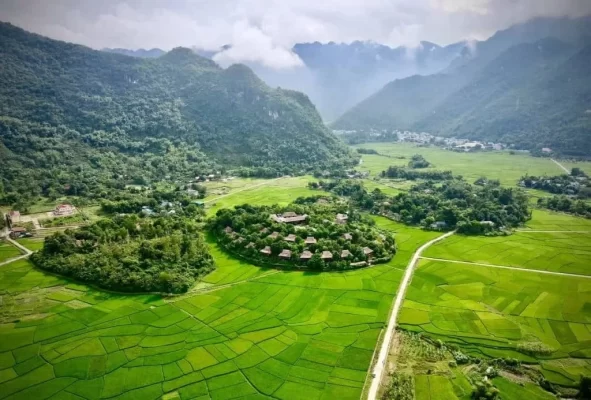
Mai Chau’s natural beauty and hospitable people attract tourists.
The warm hospitality of the Thai community, combined with their colorful festivals, traditional dances, and handicrafts, offers a rich cultural immersion that is both authentic and memorable.
Beyond the cultural experiences, Mai Chau’s natural beauty is a powerful draw. The valley’s expansive rice fields, especially stunning during the harvest season, and the surrounding limestone mountains provide a majestic backdrop for outdoor activities like hiking, cycling, and trekking. The calm, peaceful atmosphere makes it a perfect retreat for those looking to unwind amidst nature while gaining insight into Vietnam’s rural life and traditions.
Click here: All Mai Chau Tours
II. How to Get to Mai Chau Valley from Hanoi
Transportation Options from Hanoi to Mai Chau Valley:
Travelers from Hanoi to Mai Chau Valley have several options, each offering a different experience.
- By Bus: The journey takes around 3.5 to 4 hours, depending on traffic. Bus travel is an affordable and convenient option for international tourists, especially those who prefer not to drive. Most buses drop passengers at Mai Chau Town, from where you can take a taxi or a short walk to nearby villages.
- Private Car or Taxi: Hiring a private car or taxi is ideal for those who value comfort and flexibility. The cost is higher compared to the bus, but it provides a more personalized experience. This option is particularly recommended for families, groups, or travelers who prefer a more relaxed journey.
- Motorbike: For adventurous travelers, renting a motorcycle in Hanoi is a popular choice. Riding through rural Vietnam offers a scenic and immersive experience, though it’s more suitable for experienced riders. The route to Mai Chau is relatively straightforward, but international travelers should be aware that Vietnam’s traffic can be challenging, and a local driving license or international permit is required.
Travel Time and Route Information:
- The distance from Hanoi to Mai Chau Valley is approximately 140 kilometers (about 87 miles), and the journey typically takes between 3.5 to 4 hours by bus or car, depending on traffic conditions and road quality.
- The main route from Hanoi to Mai Chau is via National Highway 6 (QL6), which passes through several towns and villages, giving travelers a glimpse of northern Vietnam’s rural landscapes. This highway is well-paved but can be winding in some sections, particularly near the mountains.
III. What to Do in Mai Chau Valley
1. Exploring Thai Ethnic Villages
One of the most captivating aspects of visiting Mai Chau Valley is the opportunity to explore the traditional Thai ethnic villages, with Lac Village and Pom Coong Village being the most famous. These villages are home to the White Thai people, an ethnic minority known for their rich cultural heritage and unique lifestyle.
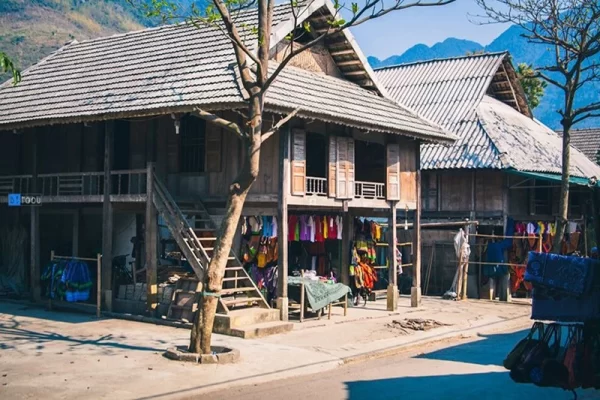
Lac Village
Visitors will be greeted with rows of stilt houses, a distinctive architectural feature of the Thai community. These wooden houses, raised on stilts, offer not only aesthetic beauty but also practicality, keeping homes cool during the hot summers and safe from flooding.
Wandering through these villages allows travelers to observe daily village life, where residents continue to practice ancient traditions passed down through generations. You’ll see people weaving intricate brocades on traditional looms, farming rice in the surrounding fields, and preparing delicious local dishes.
Read more: Things to do in Mai Chau
2. Trekking Adventures
Trekking is one of the most popular activities for those visiting Mai Chau, with several well-known hiking trails that lead through the valley’s breathtaking landscapes. The level of difficulty varies, offering both easy walks for casual hikers and more challenging routes for those seeking an adventure.
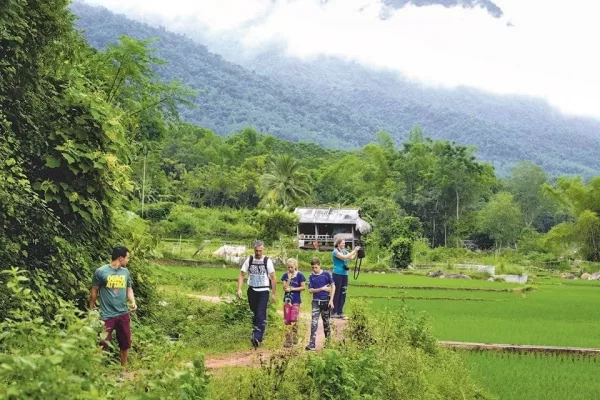
Tourists trekking through fields and villages in Mai Chau.
Trails often lead through terraced rice fields, where visitors can see the vibrant green or golden hues of the crops, depending on the season, and forest-covered hills that provide a tranquil escape into nature.
The Pung Waterfall Trail, for example, is a scenic route that rewards hikers with stunning views of the surrounding valleys and a refreshing dip in the waterfall at the end. Whether you’re looking for a short 2-hour walk or a full-day trek, the natural beauty of Mai Chau’s rural landscapes makes trekking an unforgettable experience. Along the way, hikers may encounter local farmers working in the fields or even stop by small ethnic villages to rest and enjoy the hospitality of the Thai people.
You might be like: Mai Chau Day Trip from Hanoi
3. Cycling Around the Valley
Mai Chau is the perfect destination for those who enjoy cycling, with flat terrain and peaceful roads that wind through picturesque landscapes. Renting a bicycle allows you to explore the valley at your own pace, cycling past traditional stilt houses, lush rice paddies, and rolling tea plantations. The roads connecting the villages are lined with bamboo groves and small rivers, providing a refreshing breeze as you ride.
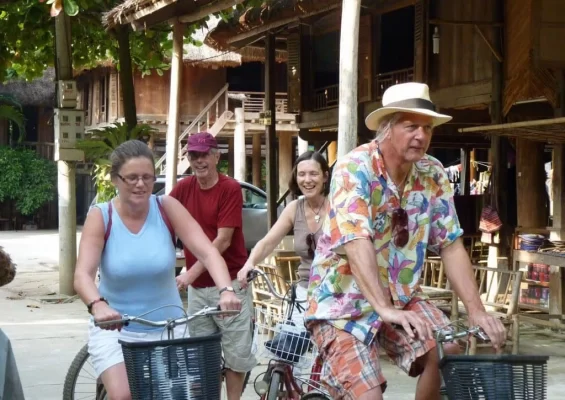
Cycling to explore the villages is a fun and wonderful activity.
A popular route takes visitors from Lac Village to nearby villages such as Nhot Village and Nà Phòn Village, offering insight into rural life in the valley. Along the way, you can stop to take photos, visit local craft shops selling hand-woven textiles, or simply enjoy the serene atmosphere.
For those looking for a longer ride, more adventurous routes extend into the surrounding hills, offering panoramic views of the entire valley. Cycling in Mai Chau is not only a way to see the natural beauty but also a way to connect with the rhythms of local life.
Start your journey with: Hanoi to Mai Chau Tour 3D2N
4. Cultural Activities and Traditional Arts
To fully appreciate the cultural richness of Mai Chau, participating in or witnessing the local cultural activities is a must. One of the most iconic experiences is watching or joining in the Xoe Dance, a traditional Thai group dance performed during festivals and special events. This graceful, synchronized dance symbolizes community spirit and hospitality, and it’s often accompanied by the sounds of traditional instruments such as gongs and bamboo flutes.
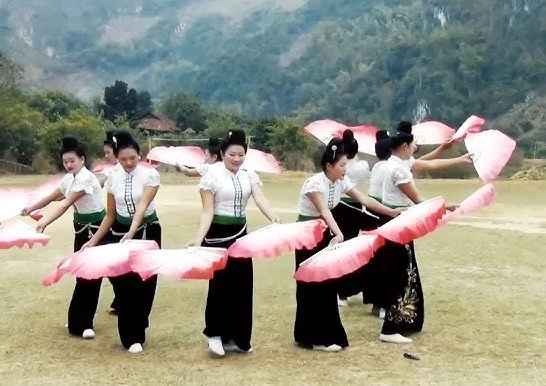
Xoe dance is a traditional dance of the Thai people.
Visitors can also try their hand at brocade weaving, a traditional skill passed down through generations. Many local families in the villages make their living from weaving, and they’re happy to teach visitors how to operate the wooden looms and create colorful, intricate patterns. This hands-on experience offers a deeper appreciation of the craftsmanship involved in creating the beautiful scarves, blankets, and clothing that are unique to the region.
Additionally, if you visit during a festival or special event, you may have the chance to witness or participate in more folk performances, including traditional songs and dances, as well as rituals that reflect the deep connection between the Thai people and nature. These cultural activities not only entertain but also provide invaluable insights into the history and traditions of the region’s ethnic minorities, creating a memorable and enriching experience for any traveler.
More details: Impressive Mai Chau Tour
IV. Discovering Local Cuisine in Mai Chau Valley
One of the most enriching parts of visiting Mai Chau Valley is the opportunity to savor its distinct local cuisine, which reflects the region’s natural bounty and cultural heritage. Traditional dishes are simple yet flavorful, often made with fresh, locally sourced ingredients, and carry a rustic charm that resonates with the valley’s serene environment.
1. Signature Dishes of Mai Chau
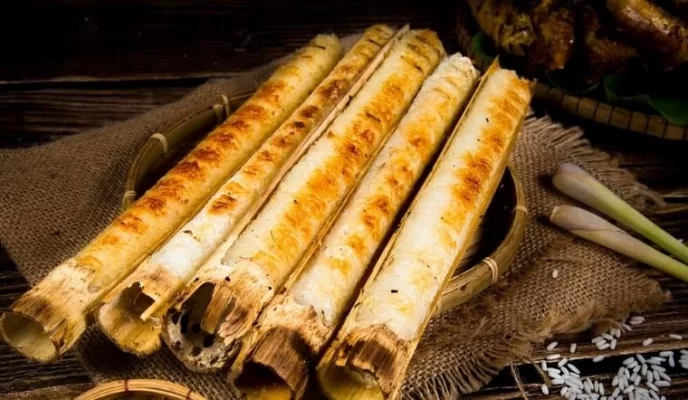
Bamboo Sticky Rice
- Bamboo Sticky Rice: Cơm lam is a staple in the daily lives of the ethnic Thai people. The rice is cooked inside hollow bamboo tubes, which imparts a subtle, smoky flavor. The dish is often served with sesame seeds, grilled meats, or simply enjoyed on its own, showcasing the pure flavor of sticky rice grown in local paddies.
- Grilled Pork: Pork, often raised in free-range environments in Mai Chau, is marinated with spices and herbs before being grilled over a charcoal fire. The result is tender and flavorful pork that is crispy on the outside yet juicy inside. The dish is usually accompanied by a dipping sauce made from fish sauce, lime, garlic, and chili, offering a perfect balance of sweet, sour, and savory flavors.
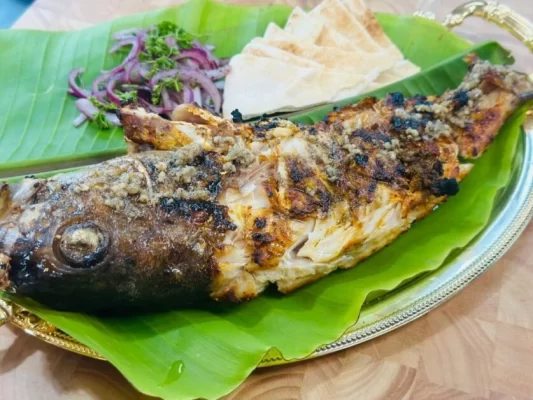
Grill Stream Fish
- Grilled Stream Fish: Caught fresh from the local streams, this fish is typically grilled or fried to a golden crisp. The simplicity of the preparation allows the delicate flavors of the fish to shine. It’s often served with local herbs and a special dipping sauce made from ground roasted peanuts, giving it a delightful crunch and richness.
- Forest Vegetables: The forests surrounding Mai Chau offer an abundance of wild vegetables, including ferns and various leafy greens. These are often stir-fried with garlic or boiled and served as a light, refreshing side dish. The unique flavors of these vegetables add a rustic, earthy note to any meal.
- Sticky Rice: Made from glutinous rice grown in the terraced fields of Mai Chau, Sticky Rice is a fragrant, soft, and slightly sweet dish. It is often paired with savory dishes like grilled meats or enjoyed on its own. The rice is steamed to perfection, retaining its rich flavor and chewy texture.
Learn more about: Mai Chau cuisine
2. Dining with the Locals
Beyond just tasting these incredible dishes, dining in Mai Chau offers an immersive cultural experience. Visitors have the chance to enjoy meals in the traditional stilt houses of the local Thai people, often gathered around a low table with the host family.
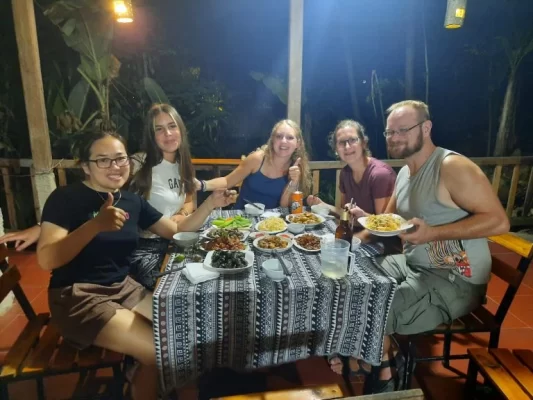
Guests enjoy a meal with local dishes in Mai Chau.
Meals are shared communally, with everyone partaking in the same dishes, creating a warm and welcoming atmosphere. This communal style of eating emphasizes the Thai people’s deep connection to family and community, and visitors are invited to become part of this intimate cultural exchange.
As you sit on the floor and enjoy your meal, you may also be treated to traditional music or storytelling, making the experience even more memorable. Dining with locals allows travelers not only to taste the food of Mai Chau but also to witness firsthand the deep-rooted traditions that make this region so special. It’s a chance to slow down, savor each bite, and appreciate the simpler pleasures of life, all while connecting with the rich culture of the valley.
Are you looking for Best Mai Chau to Pu Luong Trekking Tour 4D3N?
V. Best Time to Visit Mai Chau Valley
Mai Chau Valley has a tropical monsoon climate, with distinct seasonal changes throughout the year. Choosing the best time to visit largely depends on the experiences you are seeking, as each season brings its own unique charm.
- Spring (March to May): Spring in Mai Chau is an excellent time to visit, as the weather is pleasantly mild, with temperatures ranging from 18°C to 25°C (64°F to 77°F). The valley comes to life with blooming flowers, particularly the fragrant white blossoms of the ban flower (Bauhinia variegata), which is a symbol of the region. This season offers a perfect balance for outdoor activities like trekking and cycling, as the weather is comfortable and the natural scenery is vibrant and full of color.
- Autumn (September to November): This is arguably the best season to visit Mai Chau, especially from mid-September to October, during the rice harvest. The valley’s rice terraces turn a golden yellow, creating breathtakingly picturesque landscapes. The temperatures during autumn are cool and comfortable, usually between 15°C and 25°C (59°F to 77°F), making it ideal for sightseeing and cultural exploration. The combination of cool air and the golden rice fields makes this a highly recommended time for international visitors.
VI. Homestay Experience
For an authentic cultural experience, staying in a traditional stilt house is a must when visiting Mai Chau Valley. These homestays are typically located in ethnic Thai villages such as Lac Village and Pom Coong Village. The stilt houses are elevated above the ground on wooden pillars, designed to withstand the area’s tropical climate and blend seamlessly into the natural surroundings.
The key features of these traditional houses include bamboo or wooden walls, thatched or tiled roofs, and spacious communal areas where families and guests can gather. The rooms are often simple but comfortable, with sleeping arrangements on floor mats or thin mattresses. Many homestays provide mosquito nets, pillows, and blankets to ensure a cozy night’s sleep.
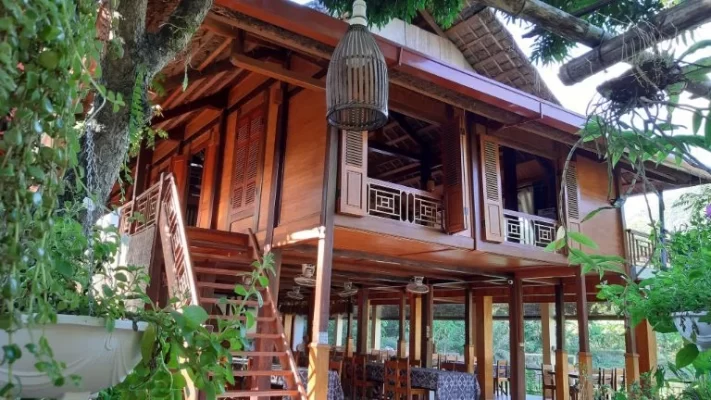
Homestay helps visitors have more authentic experiences.
One of the highlights of staying in a stilt house is the opportunity to immerse yourself in the local culture. Guests can experience the warmth of Thai hospitality, participate in traditional meals cooked with fresh local ingredients, and even join in cultural performances such as traditional Thai dancing and music. The proximity to nature is another significant draw, as these homes often open up to lush rice paddies, mountains, and clear blue skies, offering a peaceful escape from urban life.
The experience of staying in a homestay is not only about accommodation but also about engaging with the local community. Guests can take part in daily activities like weaving, farming, or learning how to cook traditional Thai dishes, providing a deeper connection to the region’s culture and way of life.
VII. Contact for a Personal Experience
Are you ready for amazing experiences? Please follow these instructions:
Visit our website: Head over to our official website, https://ulatravelvn.com/, to explore detailed information about the tour packages, itineraries, and pricing.
Contact Us: If you have any questions or need personalized assistance, feel free to reach out to our friendly customer service team. We are here to help you plan the perfect trip.
- Email: ulatravelvietnam@gmail.com
- Whatsapp/Viber/Telegram: (+84) 941 858 683
Book Online: Use our secure online booking system on the website. Simply select your preferred date, number of participants, and any additional services you might require. Our booking system is user-friendly and designed to ensure a smooth reservation process.



